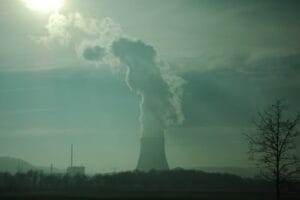
VOLATILE ORGANIC COMPOUND (VOC) CONTROL SYSTEM DAMPERS
Kelair specializes in the design and manufacturing of dampers for air pollution control equipment
Download our BrochureKelair Dampers Brochure

Pollution Control Industrial Dampers
Kelair understands the unique process air and gas flow challenges of pollution control equipment manufacturers.
You require damper products that are engineered to the exacting standards that you, your customers and regulators demand. Ideal for manufacturing facilities with emission control systems and leveraging VOC (volatile organic compound) abatement techniques, Kelair dampers have become “must have” components in pollution control equipment for many industrial companies.
Kelair VOC control system dampers are designed and constructed to meet and exceed the most stringent equipment specifications for air flow, temperature, actuation, material choice and cost value. Airflow control dampers are used to transport and control how pollutants enter VOC control equipment, and affect energy efficiency and total system performance.
Pollution Control Damper Solutions
 Kelair has been supplying engineered damper solutions to the pollution control market for over 30 years. Our custom industrial dampers are installed in various types of pollution control systems, including:
Kelair has been supplying engineered damper solutions to the pollution control market for over 30 years. Our custom industrial dampers are installed in various types of pollution control systems, including:
- Regenerative Thermal Oxidizer (RTO)
- Catalytic Recuperative Oxidizer (CATOX)
- Vapor Combustion Unit (VCU)
- Thermal Recuperative Oxidizer
- Dust Collectors
- Selective Catalyst Reduction (SCR)
- Scrubbers
Kelair can supply various styles and material combinations to fit your systems with our pollution control dampers:
- Round butterfly dampers, multi-vane dampers, louvers, modulated vane and many others.
- Cast refractory and stainless steel for high temp applications.
- Pneumatic and electrical actuation choices.
Frequently Asked Questions
- Who regulates VOC emissions?
- How can you test for VOCs in an industrial facility?
- What are examples of VOCs?
- How harmful are VOCs to industrial facility workers?

